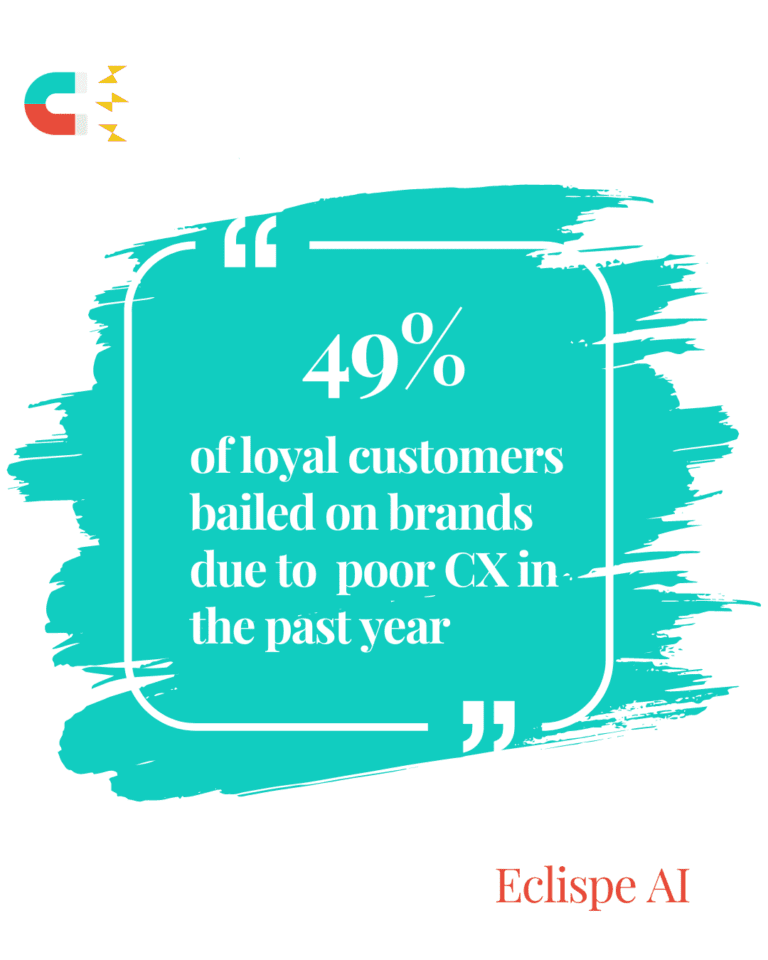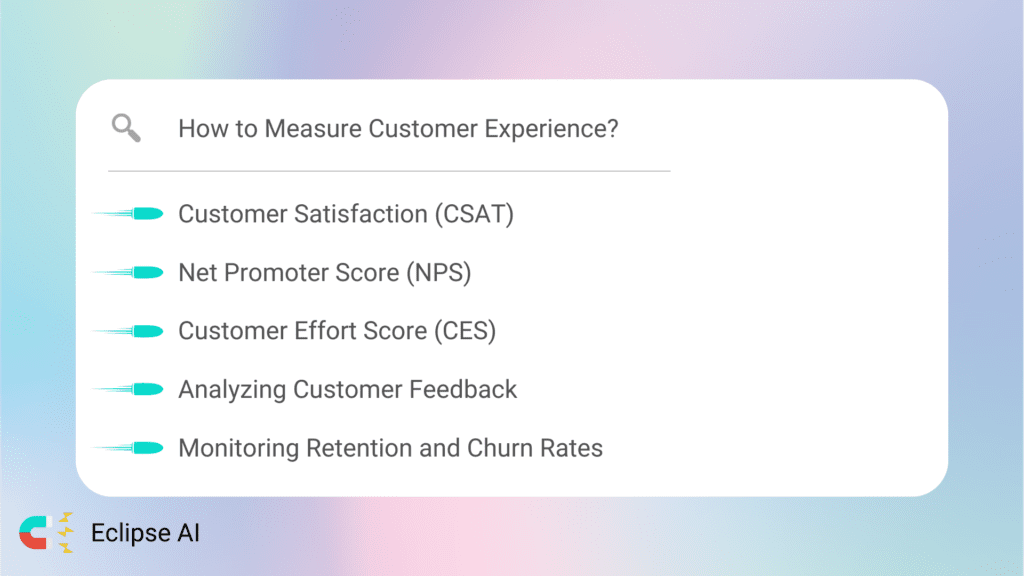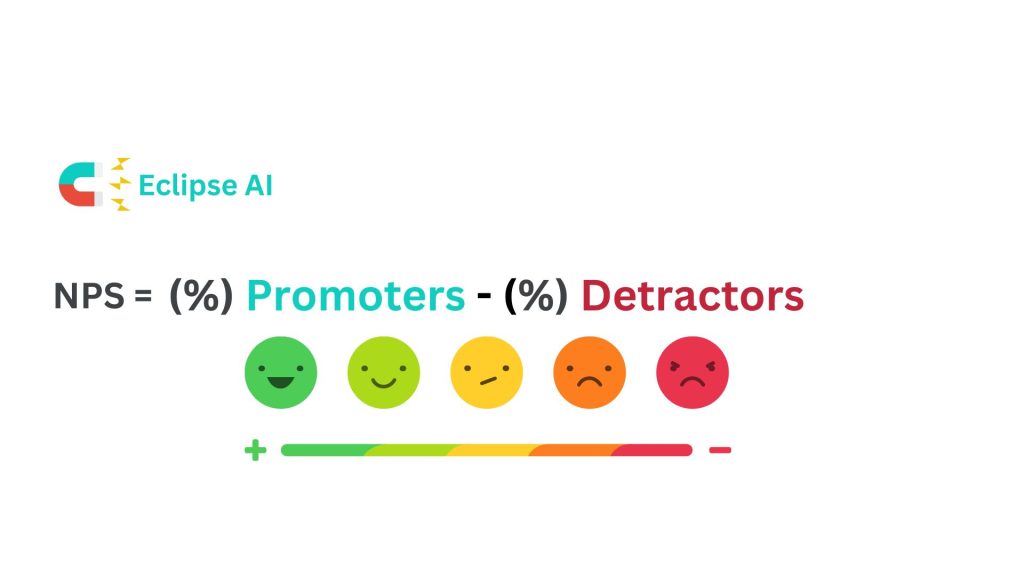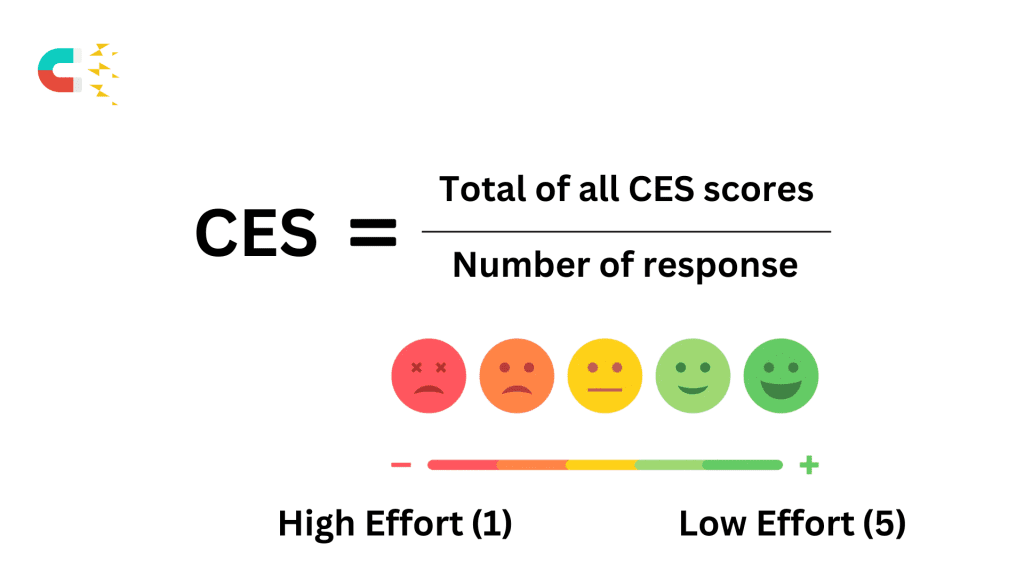

Ever felt your business isn’t connecting with customers as you’d like? The problem often lies in customer experience – the journey your customers take with your brand.


Ever felt your business isn’t connecting with customers as you’d like? Despite your efforts, something seems off. The problem often lies in customer experience – the journey your customers take with your brand. A poor experience leads to dissatisfaction and lost revenue. But it doesn’t have to be this way. By understanding and improving customer touchpoints, you can turn frustrations into moments of joy and casual customers into loyal advocates.
Customer experience (CX) encompasses every interaction your customers have with your business, from their first encounter with your brand to post-purchase support. It’s not just about providing a service or product; it’s about creating a seamless, enjoyable journey that makes customers feel valued and understood.
CX includes everything from the ease of navigating your website to the responsiveness of your customer service team. When done right, a positive customer experience can foster loyalty, encourage repeat business, and turn satisfied customers into enthusiastic brand advocates. Let’s dive deeper into what makes up a great customer experience.


Customer experience (CX) is crucial because it directly impacts your business’s success.
Customers expect personalized, seamless, and convenient experiences across all touchpoints. In fact, nearly 65% of consumers consider the customer experience to be more important than the price of a product or service.
Conversely, just over 50% of customers will stop doing business with a company after a single negative experience.
On the positive side, companies that improve their CX see an 84% increase in revenue, as satisfied customers tend to be more loyal and recommend your brand to others. So, focusing on enhancing customer experience is essential for long-term success.
Customers who experience quick problem resolutions are 2.4 times more likely to stick around.
Measuring customer experience is crucial to understanding how well you’re meeting customer expectations and identifying areas for improvement. Here’s how you can get started:


First, consider using Customer Satisfaction (CSAT) surveys. These surveys are great for gauging immediate reactions to specific interactions with your brand. Simply ask your customers to rate their satisfaction on a scale, and you’ll get direct feedback on their experience.


Next up is the Net Promoter Score (NPS). This metric measures how likely your customers are to recommend your business to others. By asking them to rate their likelihood to recommend on a scale from 0 to 10, you can identify promoters, passives, and detractors, giving you a clear picture of overall customer loyalty.


Then, there’s the Customer Effort Score (CES). This score helps you understand how easy it is for your customers to complete tasks with your company. It focuses on the effort required for them to achieve their goals, helping you identify and reduce any friction points.


Don’t forget to analyze customer feedback from reviews and social media. This feedback provides qualitative insights into customer experiences. Pay attention to common themes and specific pain points mentioned by your customers to gain a deeper understanding of their needs and preferences.
Lastly, keep an eye on retention and churn rates. These rates offer a clear picture of customer loyalty and satisfaction. High retention rates indicate strong customer loyalty, while high churn rates suggest there are issues in the customer experience that you need to address.
By using these methods, you’ll get a comprehensive view of your customer experience performance, guiding you toward meaningful improvements and ultimately enhancing customer satisfaction and loyalty.
Improving customer experience is all about understanding your customers and making their journey with your brand as smooth and enjoyable as possible. Here are some key strategies to help you get started:
To improve customer experience, you need to truly understand your customers. Use surveys, feedback, and data analytics to get a clear picture of their needs, preferences, and pain points. This insight will help you tailor your services to meet their expectations.
Customers love personalized experiences. Use customer data to personalize interactions and offers. This could be as simple as addressing customers by their name or providing recommendations based on their past purchases. Personalization makes customers feel valued and understood.
Your customer service team plays a critical role in shaping customer experience. Invest in training your team to be responsive, empathetic, and proactive. Encourage them to go the extra mile to solve customer issues quickly and efficiently.
48 percent of consumers expect specialized treatment for being a good customer.
Ensure that every interaction with your brand is seamless and hassle-free. Look for ways to streamline your processes, whether it’s making your website easier to navigate, simplifying the checkout process, or reducing wait times for customer support. The easier you make it for customers to do business with you, the better their experience will be.
Regularly gather feedback from your customers and act on it. Show your customers that you value their opinions by implementing their suggestions and addressing their concerns. This not only improves their experience but also builds trust and loyalty.
Use technology to enhance customer experience. Implement CRM systems to manage customer interactions, use chatbots for instant support, and employ data analytics to gain insights into customer behavior. Technology can help you provide a more efficient and personalized experience.
Customer Experience Management (CEM) is all about understanding and improving every interaction a customer has with your brand. It’s the practice of designing and reacting to customer interactions to meet or exceed their expectations, thus enhancing customer satisfaction, loyalty, and advocacy. At its core, CEM is about seeing your brand through the eyes of your customers and ensuring every touchpoint—from your website to customer support—is a positive one.
When done right, CEM can turn satisfied customers into brand advocates who will sing your praises and return for more. It’s not just about resolving complaints or improving customer service—though those are important aspects. It’s about creating a seamless, enjoyable journey that starts from the moment a customer learns about your brand and continues long after their first purchase.
To effectively manage customer experience, you need the right tools in your arsenal. These tools help you collect, analyze, and act on customer feedback, providing insights that drive better decision-making and improve overall customer satisfaction.
Some popular Customer Experience Management tools include:
Customer Feedback Platforms: Tools like Eclipse AI, Medallia and Qualtrics allow you to gather real-time customer feedback through surveys, reviews, and social media monitoring, helping you understand what’s working and what needs improvement.
CRM Systems: Customer Relationship Management systems like Salesforce or HubSpot centralize customer data, making it easier to track interactions, personalize experiences, and maintain strong relationships with your customers.
Analytics Tools: Platforms like Google Analytics or Mixpanel help you analyze customer behavior on your website and other digital channels, allowing you to optimize user experience and increase engagement.
Automation Tools: Tools like Zendesk or Intercom automate customer support processes, ensuring that customers receive quick, consistent, and personalized assistance whenever they need it.
Zappos is renowned for its exceptional customer service. They offer a 365-day return policy and free shipping both ways, making online shopping easy and risk-free. Their customer service team is empowered to go above and beyond, often surprising customers with overnight shipping upgrades and personalized thank-you notes. This dedication to customer satisfaction has earned Zappos a loyal customer base and a stellar reputation.
Lesson: Empower Your Team and Exceed Expectations
Suggestions for You:
United Airlines has faced significant backlash for poor customer experiences. One notable incident involved forcibly removing a passenger from an overbooked flight, which was widely publicized and led to a PR nightmare. The airline’s failure to handle the situation with empathy and respect resulted in a massive loss of customer trust and a decline in brand reputation.
Lesson: Handle Issues with Empathy and Transparency
Suggestions for You:
Creating an exceptional customer experience is no longer just a nice-to-have; it’s essential for your business’s success. By understanding what customer experience is and why it’s important, measuring it effectively, and implementing a customer-centric approach, you can transform every interaction into an opportunity to delight your customers. Learn from the best, avoid the pitfalls of poor customer service, and continuously strive to improve. Remember, a happy customer is not only more likely to return but also to become a loyal advocate for your brand. Start today, and watch your business thrive as you put your customers at the center of everything you do.
Net Promoter, Net Promoter System, Net Promoter Score, NPS, and the NPS-related emoticons are registered trademarks of Bain & Company, Inc., Fred Reichheld, and Satmetrix Systems, Inc
Don’t forget to share this post






Don’t Let Your Competitors Understand Your Customers Better Than You
Don’t miss out. Try our 30-day Free Professional Trial.

